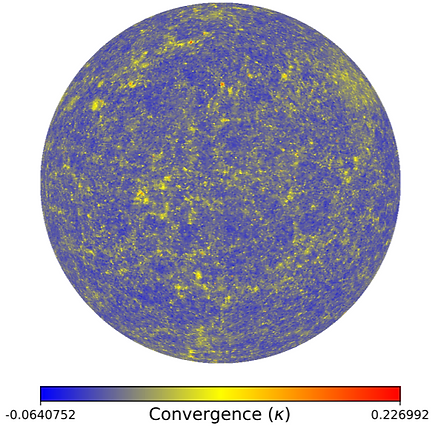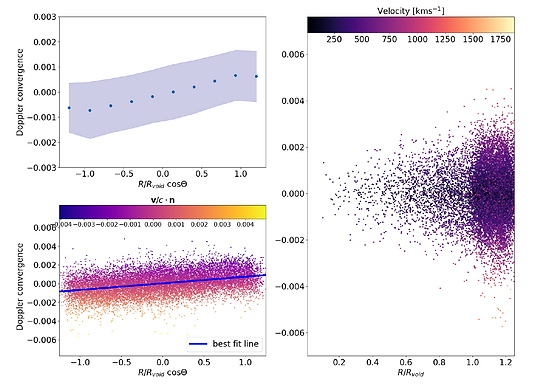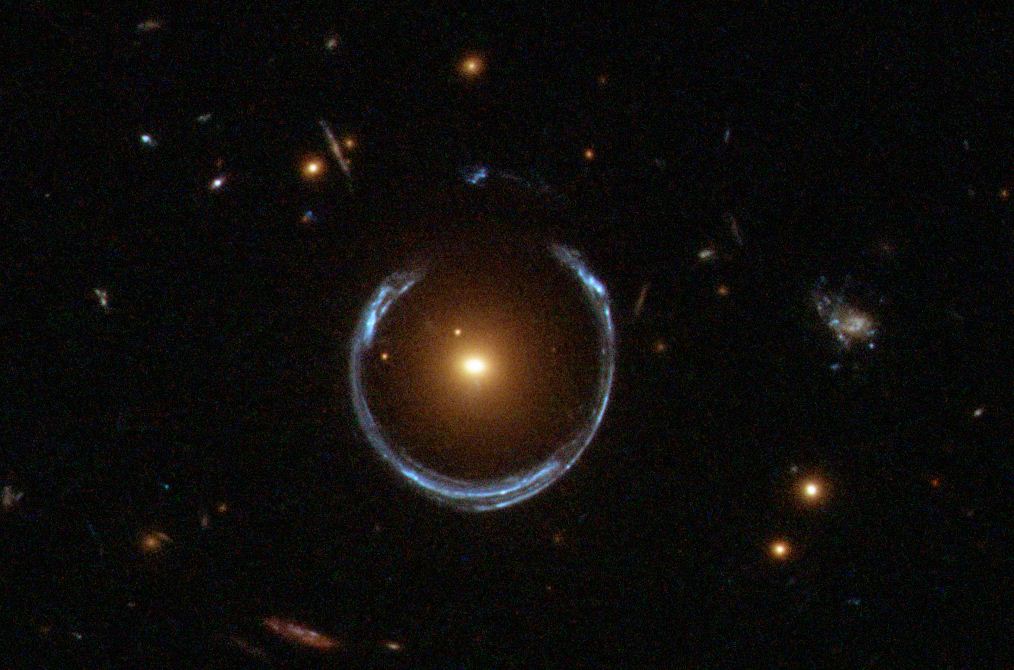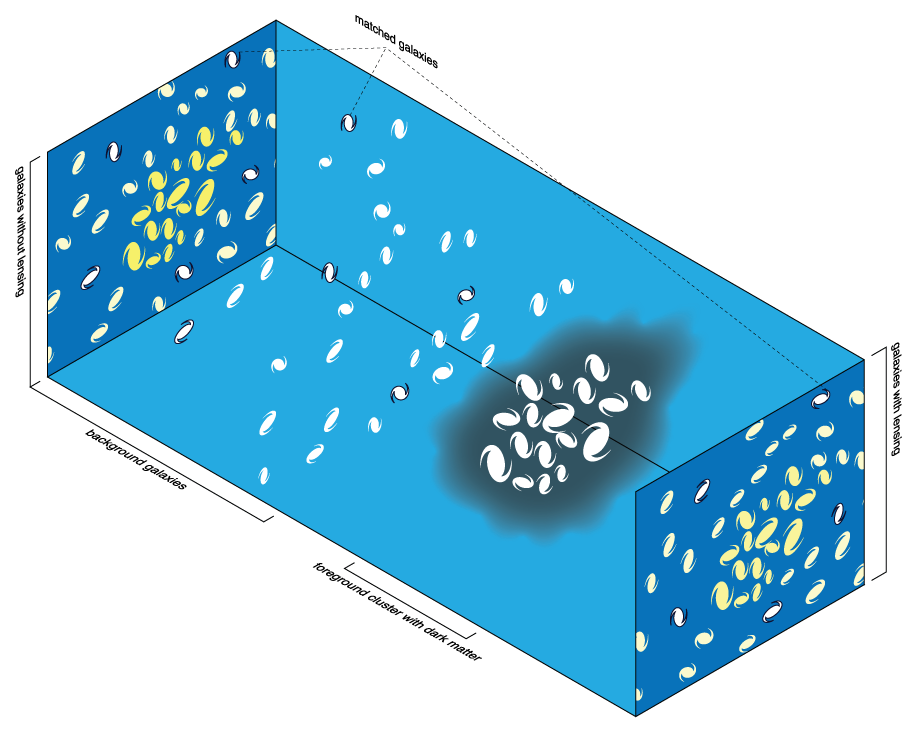The General Theory of Relativity, formulated by Albert Einstein, provides a fundamental framework for understanding gravity as the curvature of spacetime caused by mass and energy. This theory underpins much of modern cosmology and is essential for explaining phenomena such as gravitational waves, lensing and the dynamics of the expanding universe.
This figure shows the full sky weak-lensing convergence map. In our inhomogeneous universe, the view of an observer will be influenced by the location and local environment. Here we analyse the one-point probability distribution functions and angular power spectra of weak-lensing (WL) convergence and magnification numerically to investigate the influence of our local environment on WL statistics in relativistic N-body simulations. Our findings demonstrate how cosmological observations of large-scale structure through WL can be impacted by the locality of the observer. (Read more)





.jpg)

